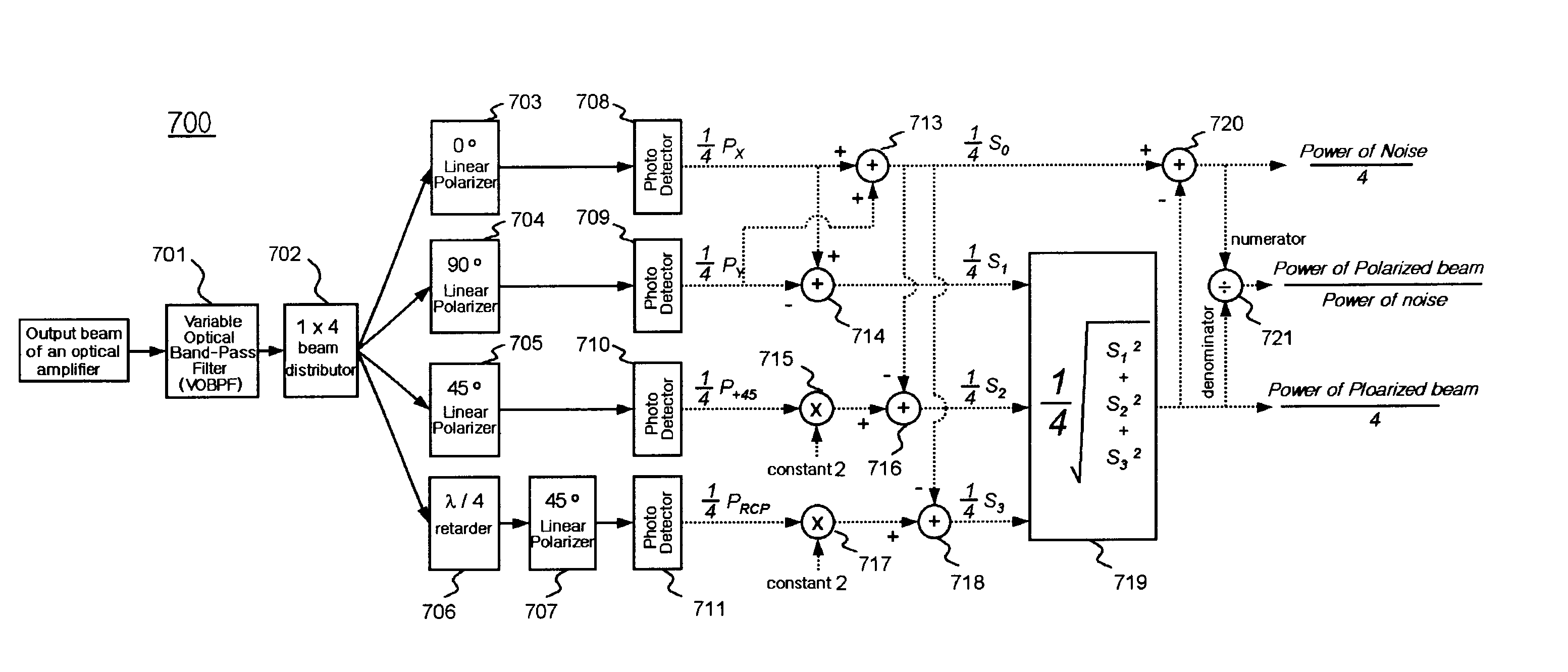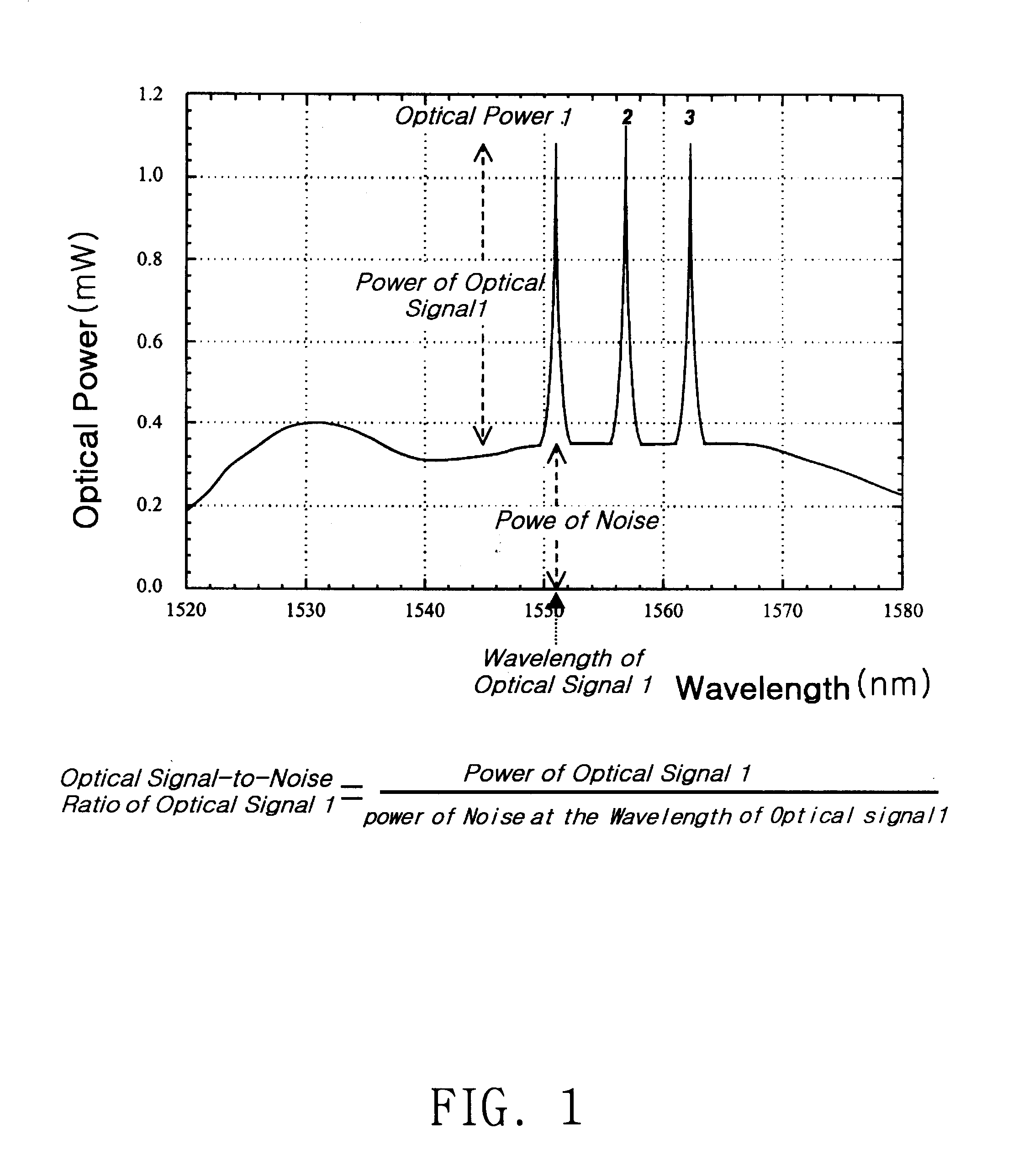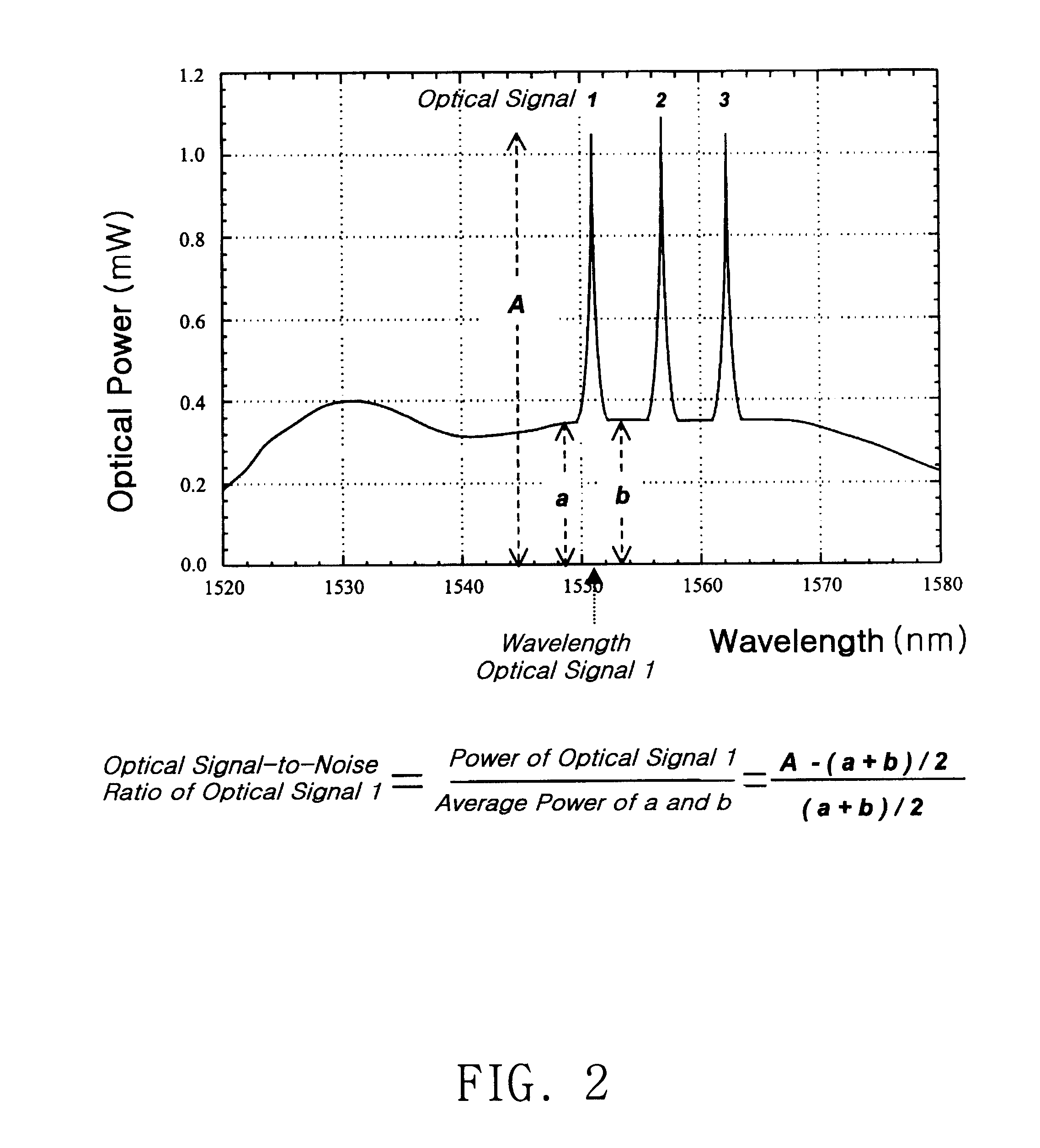Apparatus and method for measuring optical signal-to-noise ratio
a technology of optical signal and noise ratio, applied in the field of optical communication, can solve the problems of inability to eliminate the noise of the same wavelength of the signal, the inability to measure the noise directly, and the inability to measure the optical signal-to-noise ratio
- Summary
- Abstract
- Description
- Claims
- Application Information
AI Technical Summary
Problems solved by technology
Method used
Image
Examples
Embodiment Construction
The present invention will be better understood with regard to the following description, appended claims, and accompanying figures.
FIG. 7 is a block diagram of the apparatus (700) for measuring optical signal-to-noise ratio according to the present invention. The apparatus of the invention composes a VOBPF (701), an 1.times.4 beam distributor(702), 4 linear polarizers (703, 704, 705, 707), .lambda. / 4 retarder (706), 4 photo detectors (708, 709, 710, 711), 5 adders (713, 714, 716, 718, 720), 2 multipliers (715, 717), a signal processor (719), and a divider (721).
The VOBPF (701) passes the amplified output beam whose wavelength is same as the selected passing wavelength of the VOBPF. The 1.times.4 beam distributor (702) distributes the passing beam of the VOBPF into four streams, and the distributed beams are guided into the 0.degree., 90.degree., 45.degree. LP (703, 704, 705), and the .lambda. / 4 retarder (706). The 0.degree. LP (703) passes only the 0.degree. linear polarization bea...
PUM
 Login to View More
Login to View More Abstract
Description
Claims
Application Information
 Login to View More
Login to View More - R&D
- Intellectual Property
- Life Sciences
- Materials
- Tech Scout
- Unparalleled Data Quality
- Higher Quality Content
- 60% Fewer Hallucinations
Browse by: Latest US Patents, China's latest patents, Technical Efficacy Thesaurus, Application Domain, Technology Topic, Popular Technical Reports.
© 2025 PatSnap. All rights reserved.Legal|Privacy policy|Modern Slavery Act Transparency Statement|Sitemap|About US| Contact US: help@patsnap.com



